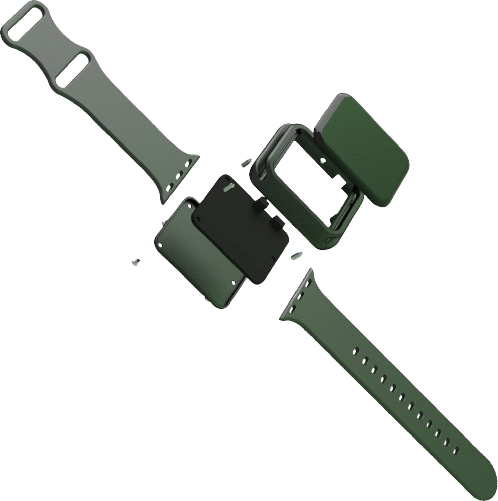We want to bring your ideas to life
CATALOG OF
PROTOTYPES
You can now access over 30 examples of prototypes designed and manufactured in our lab

ChatGPT answers inventors about their most frequently asked questions. Inventor! surely you are up to date on the latest news of ChatGPT. While it is true that artificial intelligence was not born with this product, as many believe, it is also true that its ability to interact and breadth of knowledge is undoubtedly marking the beginning of a new stage.
More than 100 million users have subjected the tool to all kinds of tests, some to demonstrate its great capacity and others looking for encouragement in the errors or inaccuracies of the tool.
This time, we asked ChatGPT the 3 most frequently asked questions that inventors throw at us. Attentive to the answers.
"It is usually advisable to create a prototype first before applying for a patent.
The reason is that a your working prototype can help you determine if your invention? is feasible and if there are any issues or limitations that you need to address before applying for a patent. In addition, a prototype can be a valuable tool to demonstrate the viability of your invention to potential investors or business partners.
We want to bring your ideas to life
You can now access over 30 examples of prototypes designed and manufactured in our lab

Once you've created a prototype and solved any technical issues, you can file a patent application. The patent protects your invention and gives you exclusive rights to its manufacture, use and sale for a certain period of time.
However, it is also possible to apply for a patent without a prototype. In that case, you will need to provide a detailed description of your invention, along with any relevant drawings or diagrams you can provide.
The choice between a patent and a utility model will depend on the nature of your invention and your business objectives.
A patent is a legal protection granted to an invention that meets certain requirements of originality, novelty and industrial applicability. A patent can protect both product and process inventions. The duration of a patent is generally 20 years from the filing date of the application.
A utility model is a form of legal protection for minor inventions that do not reach the level of inventiveness necessary to obtain a full patent. A utility model protects an invention that provides a practical solution to a technical problem, such as a tool, mechanical device, or utensil. The duration of a utility model varies by country, but is generally shorter than that of a patent.
In general, if your invention is new, not obvious and has an industrial application, a patent is the best option to protect it. If your invention is simpler and focuses on incremental improvement of an existing product, a utility model might be a viable option.
However, it is important to note that the decision to apply for a patent or utility model should be based on a careful assessment of the advantages and disadvantages of each option in relation to your business objectives and the nature of your invention. It is advisable to seek specialized legal advice before making a decision.
In the United States there is no utility model protection system as such. Instead, the term "utility patent" is used to refer to non-design inventions that provide a practical solution to a technical problem.
A utility patent in the United States is granted to anyone who invents or discovers a new and useful process, machine, manufacturing article, or composition of matter. As with any other patent, the invention must be novel and not obvious compared to existing technology.
The duration of a utility patent in the United States is 20 years from the filing date of the application, subject to payment of applicable maintenance fees. As with any patent, a utility patent gives the patent holder the exclusive right to manufacture, use, and sell the protected invention within the United States.
In summary, although there is no utility model protection system as such in the United States, utility patents provide a form of protection for inventions that provide a practical solution to a technical problem.
These simple answers show that ChatGPT is a great tool and can provide very useful information to inventors. Of course there is a margin of error and that it is possible that your answers are not 100% truthful (which in these 3, is not the case) But, the simple fact of having the ability to introduce a different point of view, will enrich our analysis in the decision-making process.
Inventors, we encourage you to interact with ChatGPT, add it to your analysis of the launch process of your innovative products. There is never too much an intelligent opinion, even if it is "artificial intelligence"
If you want to know more details about how ChatGPT responds to inventors, or want to discuss with our Inventors support team, just book your first appointment HERE.
The time to bring your ideas to life is now. We accompany you throughout the entire process: from idea to product.
San Juan Ingenieros, S. L, is the owner of the domain www.letsprototype.com, and in accordance with the General Data Protection Regulation (EU 1679/2016), we will process your data exclusively to handle your information request. You have the right to rectify or request the deletion of your data at any time via hello@letsprototype.com.